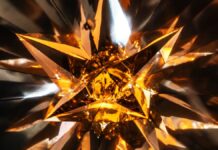This week’s science headlines ranged from cosmic chaos to the unsettling workings of the human brain, with a dash of prehistoric terror thrown in for good measure. From explosive solar storms and the discovery of ancient bone-crushing beasts to the physiological explanation for why your brain sometimes just…checks out, here’s a breakdown of the week’s most compelling discoveries.
The Sun’s Fury and Comet Explosions
The sun dominated early headlines, unleashing a series of powerful solar outbursts directed toward Earth. These flares caused delays in rocket launches (including Blue Origin’s New Glenn) and triggered stunning auroras as far south as Florida. Scientists also identified a potential weak spot in Earth’s magnetic field, raising concerns about future, more severe geomagnetic storms.
Meanwhile, another comet, dubbed “the other ATLAS,” exploded due to the sun’s extreme gravity. Fortunately, its more famous counterpart, interstellar comet 3I/ATLAS, survived – though it did emit a radio signal that, thankfully, wasn’t alien in origin. Further out in the cosmos, astronomers discovered a distant star capable of stripping atmospheres from habitable-zone planets, a sobering reminder of the harsh realities of space.
The James Webb Space Telescope may have also identified the earliest and most monstrous stars ever formed, composed of hydrogen, helium, and dark matter. Euclid telescope data suggests we may have already passed peak star formation, with the universe destined for a colder, emptier future.
The Brain’s Mysterious Shutdown
Ever experienced that frustrating feeling of mental exhaustion, where you want to focus but your brain simply refuses? Scientists now have a physiological explanation: sleep deprivation causes your brain to flush cerebrospinal fluid, effectively shutting down cognitive function. The exact purpose remains unclear, but researchers suspect this may be a form of “waking brain waste disposal” triggered by sleep debt.
Related Discoveries:
- Exercise boosts brain health via the bloodstream, and preliminary mouse studies suggest these benefits may be transferable.
- A new antivenom has proven effective against 17 dangerous African snake species.
- A woman nearly died from “toxic squash syndrome” after consuming homemade juice.
Ancient Terrors: The Hell Pig Revealed
Paleontologists unearthed terrifying details about Archaeotherium, an ancient North American beast nicknamed the “hell pig.” Weighing up to 2,000 pounds, these creatures were not pigs at all but distant relatives of hippos and whales. New tooth analysis revealed that smaller species sheared flesh, while larger ones crushed bones with horrifying efficiency – indistinguishable from lion bites.
More Animal News:
- Mammoth RNA has been sequenced for the first time, offering insights into prehistoric life.
- A 240-million-year-old crocodile ancestor from Pangaea sported plated armor and resembled a dinosaur.
- Tiny spiders in Peru and the Philippines build giant “puppet” decoys from disembodied prey.
Quantum Computing, Space Junk, and Jomon People
Other notable discoveries included:
- Exotic “time crystals” could revolutionize quantum computing memory.
- Chinese astronauts were forced to return to Earth after their spacecraft was struck by suspected space junk.
- A study found that prehistoric Jomon people in Japan had little to no DNA from the mysterious Denisovans.
- Physicists peered inside the nucleus of a molecule using electrons as a probe.
The Future of Cryptography: Quantum Hacking Looms
Quantum computers pose an existential threat to modern cryptography. Researchers are racing to develop quantum-resistant algorithms, but the challenge is immense.
Weekend Viewing: Leonid Meteors and Astrophotography
The Leonid meteor shower peaks on November 17, offering a spectacular celestial display. An astrophotographer captured a stunning image of a skydiver seemingly falling past the sun’s surface, a visual illusion that defies logic.
In conclusion, this week’s science headlines were a reminder of the universe’s raw power, the mysteries of the human brain, and the terrifying creatures that once roamed Earth. From cosmic chaos to prehistoric terrors, science continues to push the boundaries of our understanding
























